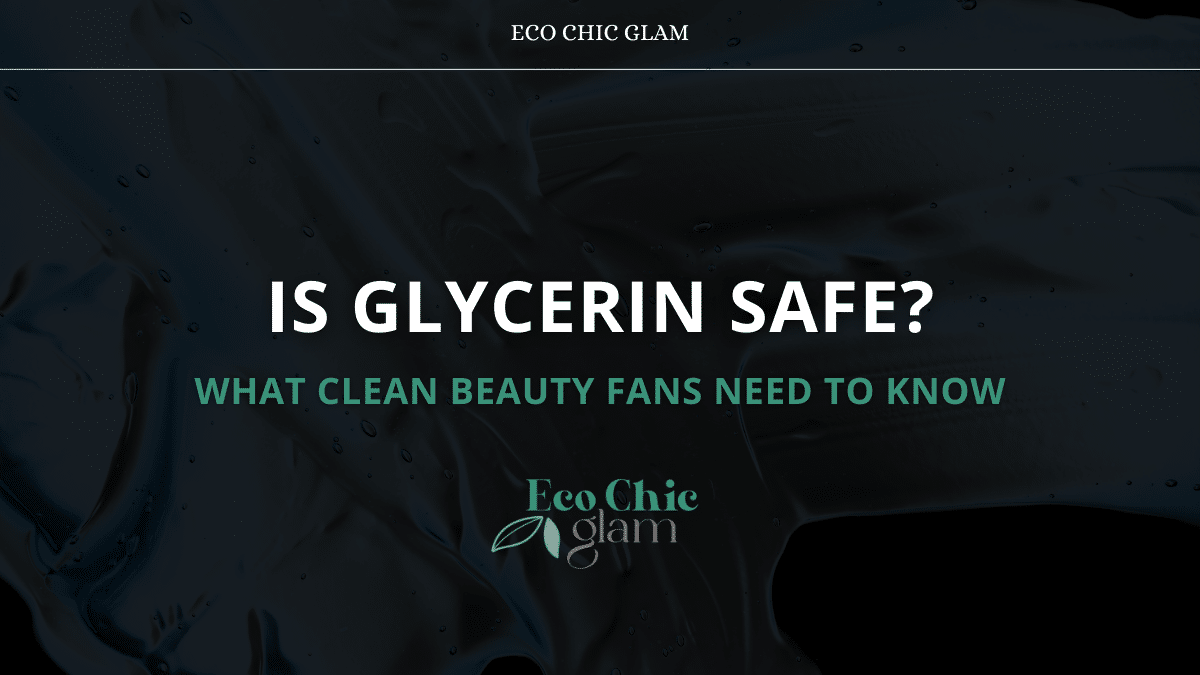It’s in your moisturizer, cleanser, serum—even your lip balm. But what actually is glycerin?
And more importantly: is it safe for your skin?
Let’s break it down. Whether you’re living that clean beauty life or just checking labels for the first time, here’s everything you need to know about glycerin, the misunderstood hero in your skincare.
🧴 What Is Glycerin, Really?
Glycerin (aka glycerol) is a clear, odorless liquid that occurs naturally in plant oils or can be synthetically produced.
In skincare, it’s used as a humectant—which means it pulls water into your skin, keeping it plump and hydrated.
✅ Plant-based
✅ Non-toxic
✅ Non-comedogenic
✅ Biodegradable
✅ Affordable and effective
🌿 Why It’s Loved in Clean Beauty
Glycerin is a staple in eco-friendly skincare because:
- It’s gentle on all skin types
- It boosts hydration without heavy oils or silicones
- It’s non-irritating and rarely causes breakouts
- It enhances the effectiveness of other ingredients (like hyaluronic acid)
It’s especially helpful in minimal, plant-based formulas that avoid synthetic fillers.
❓ Is Glycerin Safe?
Short answer: YES.
Long answer: It depends on the concentration and source.
💡 In small amounts (under 10%), it’s deeply hydrating.
💡 In very high concentrations without other moisturizing ingredients, it can pull moisture from your skin instead of into it—leading to dryness.
That’s why glycerin works best in a balanced formula, paired with occlusives (like oils) and emollients (like aloe or shea butter).
🧼 Plant vs. Synthetic Glycerin: Does It Matter?
✔️ Vegetable glycerin (from soy, coconut, or palm) is the gold standard in clean beauty.
❌ Synthetic glycerin is petroleum-derived and often found in conventional brands.
If you’re aiming for a fully eco-conscious routine, choose plant-based glycerin—especially from certified organic or sustainable sources.
💡 How to Spot Glycerin in Your Products
Check the top 5 ingredients on your label.
You’ll see it listed as:
- Glycerin
- Vegetable Glycerin
- Glycerol
It’s most common in:
- Moisturizers
- Hydrating toners
- Serums
- Lip balms
- Cleansing balms and gels
🙋♀️ FAQs
Q1: Can glycerin clog pores?
Nope! Glycerin is non-comedogenic, meaning it won’t block your pores. It’s actually great for acne-prone skin when used in a balanced formula.
Q2: Is glycerin safe during pregnancy or breastfeeding?
Yes! It’s considered safe for all life stages, including during pregnancy. Just make sure the overall formula is clean and fragrance-free.
Q3: Can I use pure glycerin on my face?
It’s not recommended. Pure glycerin can be too sticky and drying when used alone. Always dilute or use it within a formulated product.
📲 Final Thoughts: Glycerin = Green Beauty’s Secret Weapon
When used right, glycerin is one of the safest, most effective, and eco-friendly skincare ingredients out there. It hydrates, smooths, and supports barrier repair—naturally.
✨ Follow us on social media for more ingredient breakdowns, clean beauty swaps, and zero-waste skincare tips
🌱 Visit EcoChicGlam.com for tutorials, reviews, and product picks that align with your eco-beauty goals

